Hornitos holds the mystery of a ghost town. Whether or not you believe in apparitions from the Wild West, the town of Hornitos, Ca., can be startling for what you won’t find. There are no banks or office buildings, no strip malls touting tired brands or bright lights obscuring the night sky. With a population hovering around 50 residents, Hornitos isn’t technically a ghost town, yet curious visitors to this Yosemite Mariposa County hideout can still mingle with the avenging spirit of bandit-hero Joaquin Murrieta simply by walking through the main plaza and its spectral array of age-old buildings towered over by an infamous hilltop cemetery.
Now inhabited by a few souls who appreciate its tranquility and memories, and the surrounding ranch land, it challenges today’s tourists to imagine that in 1870 it was the center of a thriving district and home to a population of over 10,000.
Originally populated by enterprising gold miners during the Gold Rush, the town of Hornitos is located in Mariposa County about 3 hours – or 130 miles east of the San Francisco Bay Area – en route to Yosemite National Park.
Today there remain stone and brick buildings, some still whole, more in ruins. Famed outlaw Joaquin Murrieta, known as the Robin Hood of the West, Joaquin Murietta is said to have frequented the dance halls and saloons, from which he maintained secret escape tunnels.
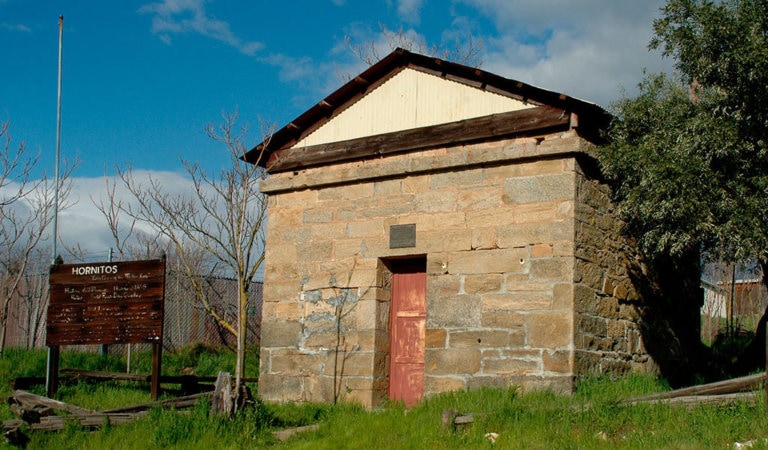
Visit Hornitos to take a step back in time – explore the remains of Domingo Ghirardelli’s general store; tour the Masonic Hall; and perhaps even spot the ghost of Joaquin Murrieta at the remnants of the old Stone Jail.
Hornitos serves as a portal to California’s raucous Gold Rush past. Yet, while history may be its ace in the hole, a visit to this now peaceful enclave also reveals a range of things to do from picnicking in the park to cycling its rolling backroads to paying homage at the annual Dia De Los Muertos celebration. Here are just a few recommendations on how to make contact with the rough & tumble spirit of Hornitos.
Interested in visiting? Find lodging in Mariposa County close to Hornitos, CA.
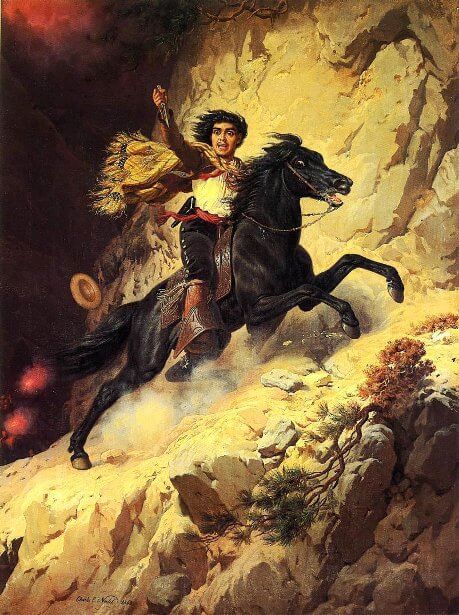
Hornitos, California History
First, some Hornitos, California history. Hornitos was a rollicking Mexican village that sprang up in 1850 a few miles from the newly rich gold diggings of Quartzburg. Situated on Burns Creek, ”Hornitos” means “little ovens” in Spanish and was named for the above-ground rock and adobe graves of Mexican settlers found in the area.
Joaquin Murrieta
The town quickly grew to a population of more than 10,000 in the 1850s and gained a reputation for saloons, dancehalls and frontier justice. It was here that the legend of Joaquin Murrieta galloped into the consciousness of America. With the details of his life much-debated, it was purported that Murrieta saw his wife killed by a gang of these newcomers and thus ensued a life of banditry and revenge. Newspapers documented his exploits, attributing all sorts of criminal acts, while others saw him as a righteous vigilante (and the inspiration for future stories such as Batman and Zorro).
The legend of Joaquin Murrieta took a grim turn in 1853 when a group of 20 vigilantes (dubbed the “California Rangers”) were offered a large reward by the state of California to put an end to his enterprise. Captain William J. Howard, a Hornitos resident, joined the posse and provided horses as they gathered on his ranch. On July 25, 1853, they tracked down Murrieta and his gang at their camp and killed 8 bandits, including the leader’s “right hand” Tres Dedos (aka Three-Fingered Jack). Another member of the Rangers was local Bill Burns (namesake of aforementioned Burns Creek) and it is purported that he fired the shot that killed Murrieta himself. To prove that Murrieta was dead, the Rangers preserved his head in a jar of whiskey and toured the mining camps charging a $1 pay-per-view. The jar later ended up in a San Francisco museum until it was destroyed in the 1906 Great Earthquake. Grim, indeed.
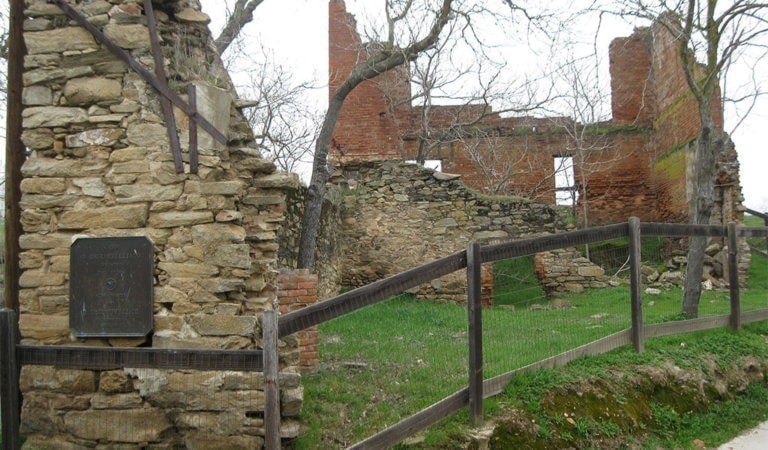
Ghirardelli
While Murrieta took refuge from lawmen at such local Hornitos establishments as Rosie’s Fandango Saloon, there were other notable characters that came for its boomtown bona fides. In the 1850s, Domenico “Domingo” Ghirardelli (1817-1894) of confection fame ran a general store here selling supplies as well as chocolates to hungry miners who had a little extra gold dust in their pockets. His success contributed to the founding of Ghirardelli Chocolates in San Francisco (where Ghirardelli Square continues to be a popular tourist attraction) while in Hornitos the ruins of his once-bustling store are a reminder of what happens when boomtowns go bust.
In 1870, Hornitos became the first incorporated city in Mariposa County. Though not verified, it is said that during this period nearly 15,000 fortune seekers called this mineral-rich mecca home. Over a hundred years later (and with the gold long extracted) the population of Hornitos dwindled and the city became unincorporated in 1973, thus forging its ghostly status.
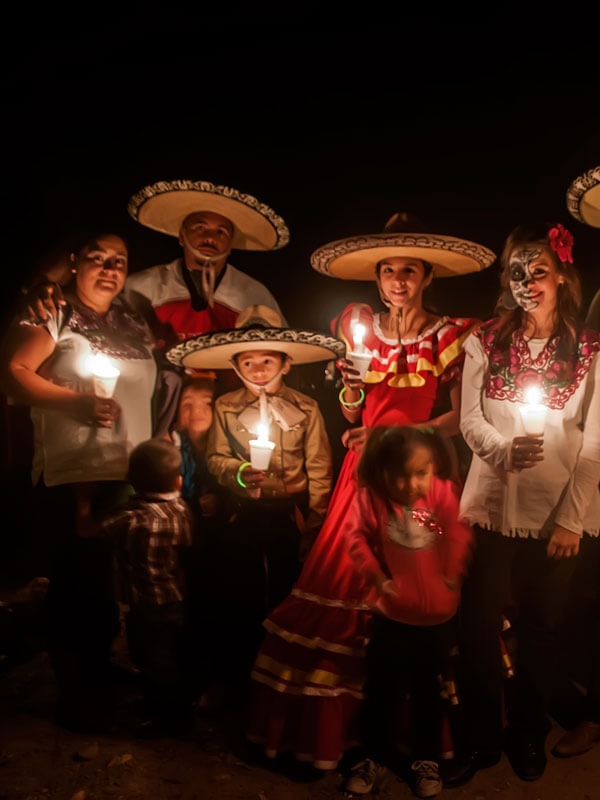
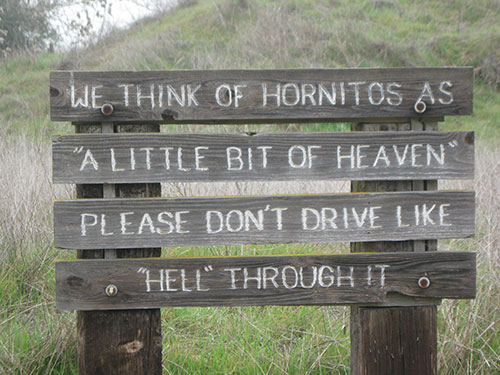
Things to Do in Hornitos, CA
Be sure to stop in. Hornitos, CA will charm you with gold rush history, brilliant birding, and photo-worthy scenery.
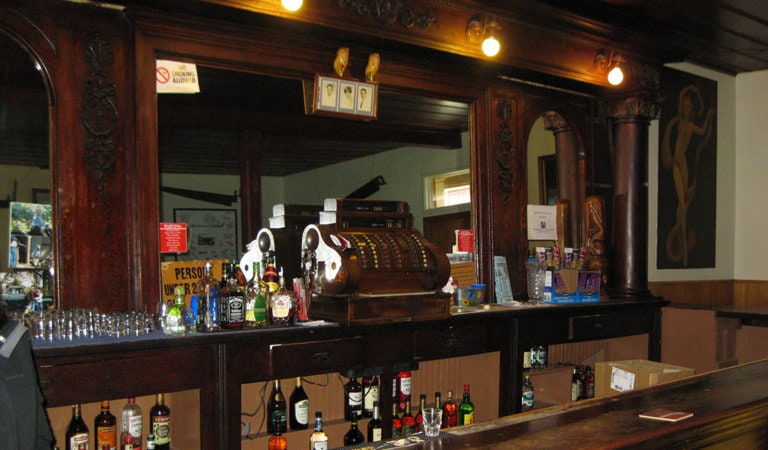
Gold Rush Ghosts
Arriving in Hornitos’ tiny central plaza, history buffs break into a spontaneous cowboy waltz upon seeing the abundance of architectural ruins and informational plaques. The ghost of Joaquin Murrieta infuses the crumbling brick walls of such historic buildings as the Ghirardelli General Store – owned by the same Domingo Ghirardelli that later moved to San Francisco and created Ghirardelli Chocolates.
Other historic buildings include the rough-hewn Stone Jail, Masonic Hall, Gagliardo & Co. store, and of course Joaquin Murietta’s escape tunnel. If it’s open, stop at the Plaza Bar for a Bloody Mary and hear colorful stories from your friendly bartender/docent.
The landscape is also dotted with historic markers, like the one for the old Wells Fargo Office at Hornitos.
Besides these attractions for the history buff, Hornitos and the surrounding countryside today are prime country for birders, wildflower seekers, and bicyclists.
Bring Your Own Bike to the Rich Rolling Ranchlands
B.Y.O.B to the R.R.R.
In Southern Mariposa County it can be said that all (country) roads lead to Hornitos, with Bear Valley Road, Old Toll Road, and Hornitos Road all offering minimal car traffic along with gentle ups and downs.
Winter/spring rain showers bring out emerald green foothills and breezy palettes of colorful wildflowers…. energizing atmospherics for your biking excursion.
The Bear Valley Road (county road J16) connecting Hornitos to Bear Valley, was part of the original route from the town of Mariposa to Merced. The upper part of this road offers an awesome vista of Hunters Valley, the lower Merced River canyon as it emerges into a gentler river valley, and the Great Central Valley extending to the Coast Range. Bear Valley, where J16 meets state Highway 49N, is another near ghost town, once the heart of Fremont’s mining activities.
Situated at 843 feet (257 meters) as the Central Valley begins its long climb to the Sierra peaks, Hornitos can be enjoyed year-round, including visits outside of the hot summer months.
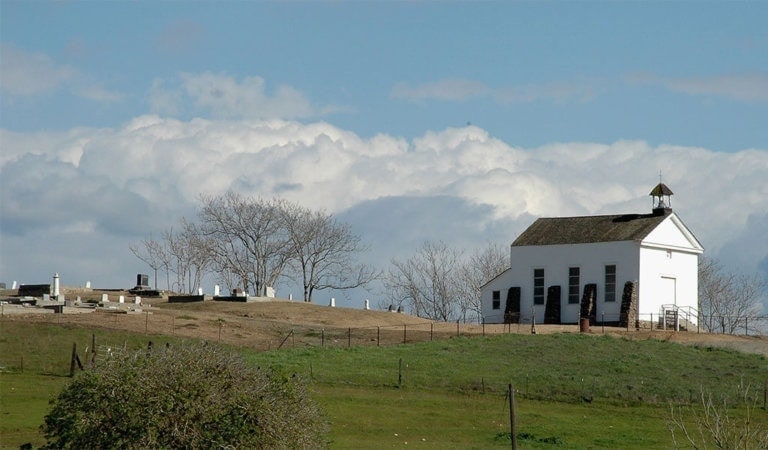
Camera Friendly
With everything from the sun peeking through the ruins to horses galloping beneath oaks to cattle grazing beneath the ridgeline, Hornitos has all the f-stops a photographer could ever need. If pastoral landscapes are your thing, this is where you want to set up whether that’s with a Nikon or an easel for some plein air painting.
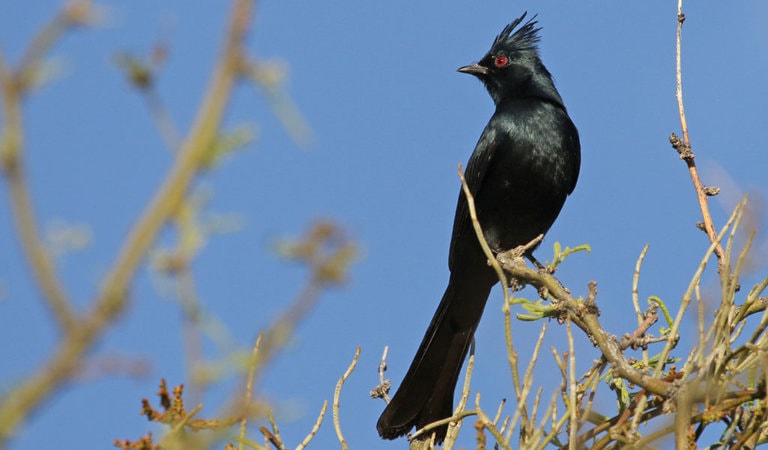
Finding Feathered Friends
Bring out the binoculars when passing through Hornitos! This region is prime bird-watching country, from quails to cormorants, and osprey to many species of owl, as well as a myriad of songbirds that fill the air with their lilting music.
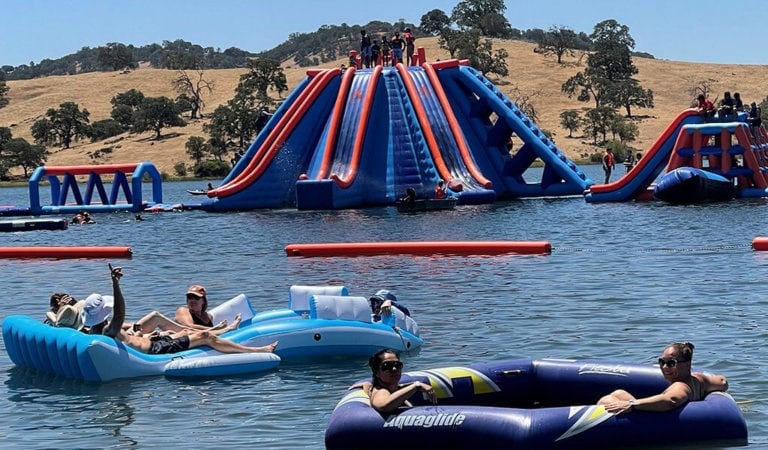
Waterworld
Though you might feel like water sports are a galaxy far, far away from Hornitos, a short 10-mile drive brings you to Lake McClure and Lake McSwain for a global assortment of refreshing hydro-activities. With everything from fishing, water skiing and kayaking to the thrills of lakeside Exchequer Mountain Bike Park and Splash-n-Dash Aqua Park, these twin gems are the perfect way to cool off on a hot day. Camping available.
Pass the Olives, Joaquin
Right on the plaza is the Hornitos Park where you can let the kids hit the jungle gym while laying out your spread on one of its picnic tables. So central to the historic action that you can invite Joaquin to your picnic lunch. Can accommodate large groups for a small fee. Public bathrooms available.
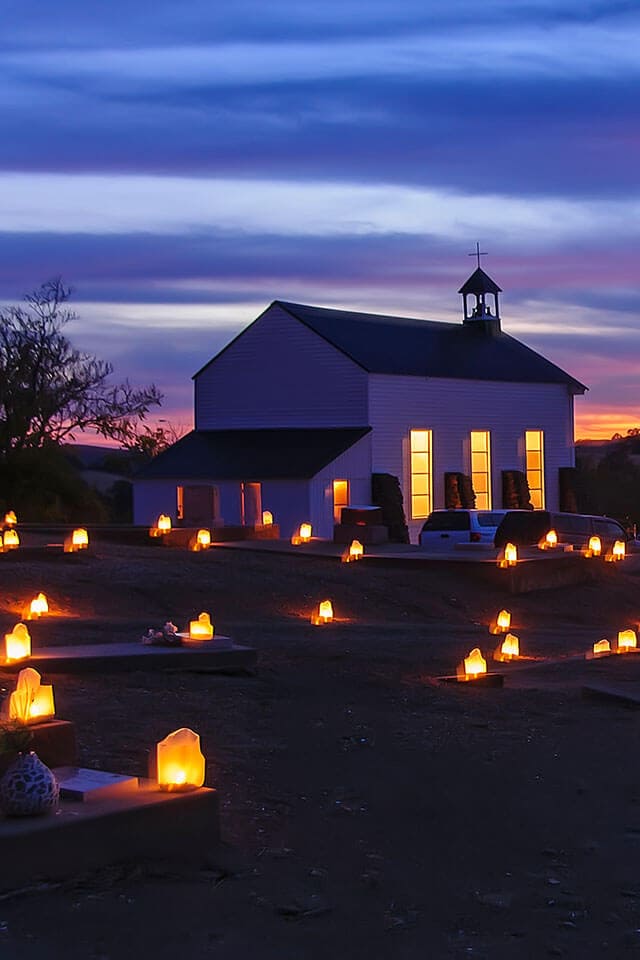
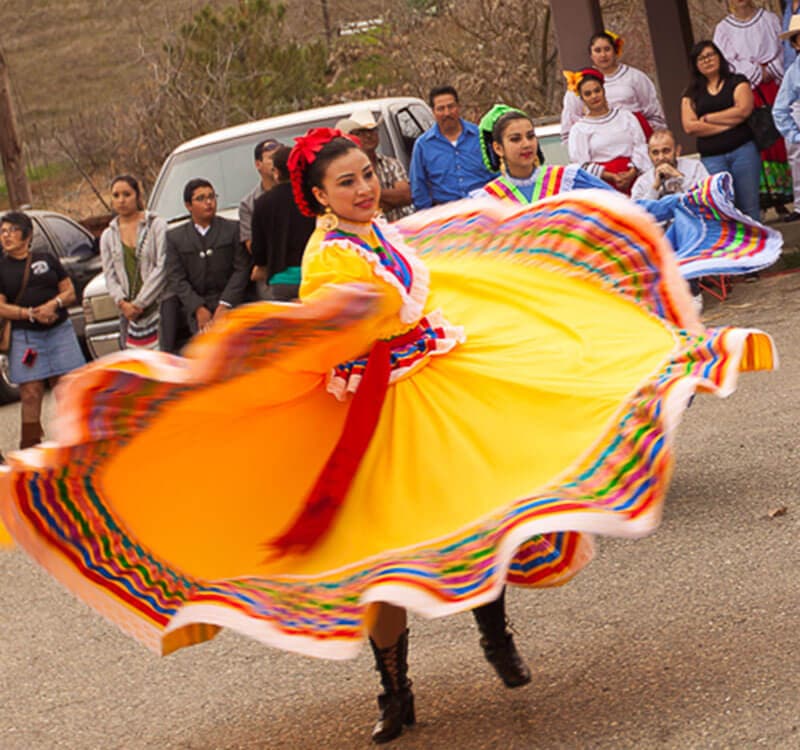
Hornitos Events
If you’re lucky enough to be passing through Hornitos during one of the town’s special events, be sure to make time to attend.
Dia De Los Muertos
Hornitos’ ghost town vibe makes it a perfect place to celebrate Dia De Los Muertos/All Souls Day. Each year, Hornitos hosts visitors from far & wide for its annual celebration on November 2nd. After meeting in the plaza (where face paint and costumes are not uncommon) observers follow with a candlelight procession a short distance up the hill to historic St. Catherine’s Church and cemetery. A stirring way to pay respects to those who came before in a setting unlike any other.
Enchiladas With A Purpose
Every March the Hornitos Patrons Club hosts the Hornitos Annual Enchilada Dinner, which benefits local charities including renovations of St. Catherine’s Church. Dine-in or take-out knowing that you’re helping a good cause.
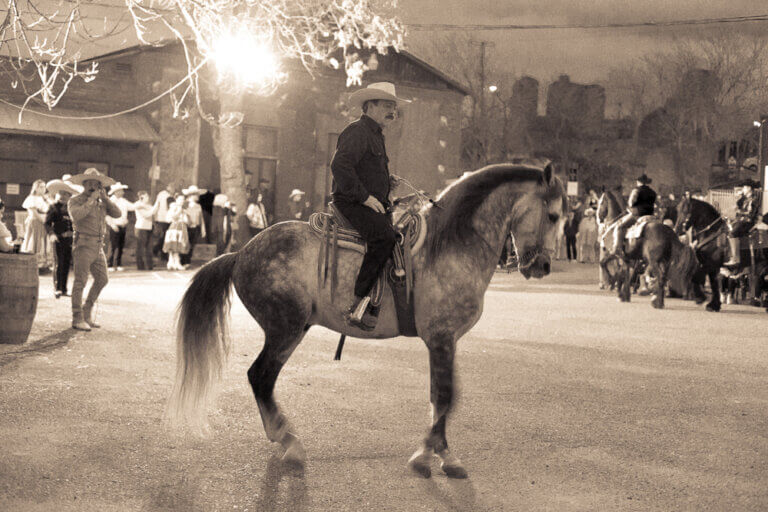
- Chocolatier Domenico Ghirardelli went by “Domingo” (the Spanish equivalent of his first name) after emigrating from his native Italy to Lima, Peru in 1838 (ten years prior to setting up shop in California). Have chocolate, will travel!
- The Life and Adventures of Joaquin Murieta (1854) written by a Cherokee named Yellow Bird (aka John Rollin Ridge) was one of the first novels written in the newly formed state of California, and the first published novel by a Native American. The fictional biography was wildly popular and integral to Murrieta gaining mythical status as a bandit-hero.
- One of the few remaining traces of Quartzburg is a tiny cemetery plot located on the north side of Burns Creek about 2 miles from Hornitos on Bear Valley Road (J16).
- Though there is no lodging directly in Hornitos, try searching nearby Catheys Valley, Lake McSwain (camping/RV) and the town of Mariposa for accommodations that suit your taste and budget.

